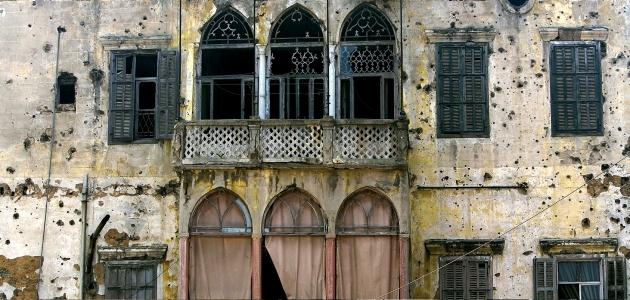In the aftermath of Lebanon’s 15-year civil war, developers are turning the capital into a version of Dubai. But there’s a lot of history at stake.
Newsweek:

On a recent Saturday night in the Gemmayze district of Beirut, hundreds filled the streets, holding candles and waving signs to protest the destruction of the historic French colonial and Ottoman-era buildings that give this city its character. OUR HISTORY IS NOT FOR SALE read one. Another said BEIRUT IS NOT DUBAI.
It certainly looks like it’s trying to be. Once known as the “Paris of the Middle East,” the city is now becoming an eyesore as it attempts to mimic the development of other regional business hubs. Cranes and jackhammers have become as integral to Beirut’s urban landscape as the Ottoman and French architecture that once dotted the streets. A recent United Nations Development Program report said that Beirut will add 300,000 new buildings in the next decade, leaving the already-crowded city with virtually no public spaces. The country’s 15-year civil war, from 1975 to 1990, turned the capital into rubble, and now developers are rebuilding it with an eye toward dollars instead of toward repairing the religious rifts that caused the war in the first place.
The building boom is destroying not only the historic beauty of this Middle Eastern capital but also its social traditions. The old downtown area, now known as Solidere after the development company founded in 1994 by then–prime minister Rafik Hariri to rebuild the center, used to be the heart of Beirut, where all religious groups and social classes lived side by side—a rare haven of tolerance in a country divided by religious differences. During the war, many Christians who lived in the area fled downtown out of fear, leaving their homes and belongings behind to be seized by Shiite Muslims from the harder-hit south, who squatted there.
With the downtown area turned to rubble, Solidere, a public-private partnership, moved in to begin the hard work of reconstruction. Critics, and there are many, say Solidere demolished the city center to erase all memory of the conflict and to build the Beirut of Hariri’s dreams, a modern cultural and economic hub that mimics the style of buildings found in the old city, but lacks the soul. Solidere’s projects include Beirut Souks, a luxury retail center that opened in 2009 where well-to-do shoppers can browse for Cartier and Dolce & Gabbana, and Saifi Village, a residential and arts district in the city center. Supporters of Solidere’s efforts insist the capital was so devastated that the public sector could not have rebuilt it alone. Solidere says it worked hard to reposition Beirut on the world stage and restore the downtown area as a place of peace and mutual respect. It succeeded on one front, says Angus Gavin, the company’s head of urban development: businesses have once again been arriving to set up shop, from American Express Bank to bustling restaurants.
Yet the Solidere project priced out most of the Lebanese who used to live and work there. As mixed-income housing gave way to luxury buildings targeting rich Gulf Arab investors and expatriates, the 150,000 people who once lived downtown were forced to move farther out. “Beirut is no longer for the Lebanese,” became a common refrain. “Solidere has become a victim of its own success,” admits Gavin. “But you have to remember that in the beginning it was by no means clear that anyone would want to come back.”
Someone did—just not the poor craftsmen, butchers, and workers who used to inhabit the old city. “We have lost the melting pot,” says Assem Salam, a prominent local architect, who helped found the Association for Protecting Natural Sites and Old Buildings in Lebanon in 1960. “Now the city is divided.”
He should know. Salam’s 1840s Ottoman house sits in Beirut’s Zuqaq al-Blatt district, a short walk from Solidere. During the war, shells hit his roof three times, leaving a hole through which he can see the sky. All around him historic buildings are demolished regularly to make way for towers, while he sits in his garden and watches the world go by. “Oh, yes, I have preserved my house,” he says sadly. “But what is the use of preserving my house if the community around it is not preserved?”